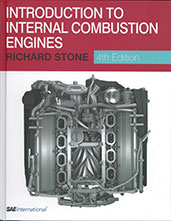Technical Paper
Particulate and Hydrocarbon Emissions from a Spray Guided Direct Injection Spark Ignition Engine with Oxygenate Fuel Blends
2007-04-16
2007-01-0472
The blending of oxygenated compounds with gasoline is projected to increase because oxygenate fuels can be produced renewably, and because their high octane rating allows them to be used in substitution of the aromatic fraction in gasoline. Blending oxygenates with gasoline changes the fuels' properties and can have a profound affect on the distillation curve, both of which are known to affect engine-out emissions. In this work, the effect of blending methanol and ethanol with gasoline on unburned hydrocarbon and particulate emissions is experimentally determined in a spray guided direct injection engine. Particulate number concentration and size distribution were measured using a Cambustion DMS500. These data are presented for different air fuel ratios, loads, ignition timings and injection timings. In addition, the ASTM D86 distillation curve was modeled using the binary activity coefficients method for the fuel blends used in the experiments.

